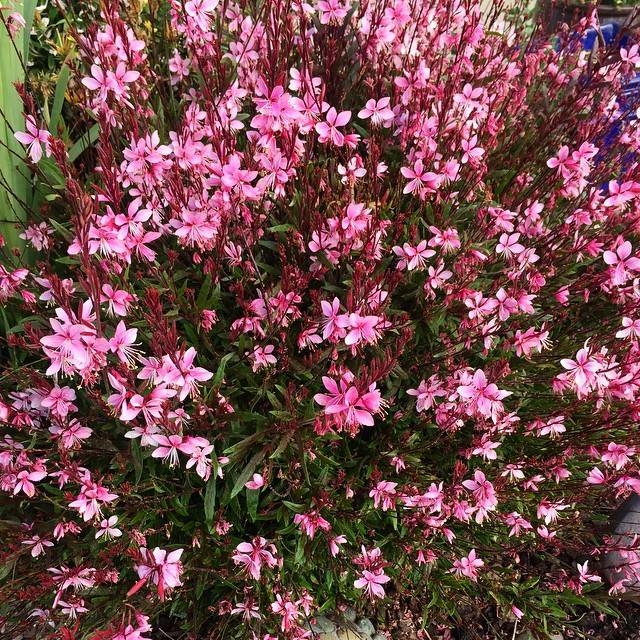Gaura lindheimeri (Beeblossom)
By Jackie Woods UCCE Master Gardener
Planting areas: thrives in sandy, loamy, well-drained soils
Size: 18-24 inches tall and 12-18 inches wide
Bloom season: early summer into fall
Exposure: enjoys full sun
Pruning needs: trim back flowered stems to encourage new stems
Water needs: drought tolerant once established
Narrative: Gaura, also known as Beeblossom, is a stunningly beautiful plant with long, wispy stems and 4-leafed white or pink flowers. Gaura has a deep taproot and foliage ranging in color from dark green to burgundy. There are several different species of this plant which can be annual, biannual or perennial and it reproduces via seeds or by rhizomes. One of the most common species is Gaura ‘Siskiyou Pink' (Gaura lindheimeri). Native to southeastern Texas, Louisiana and Mexico, Gaura is a hardy plant in zones 5-9 and does very well on the Central Coast.
The best time to plant Gaura is in early spring. Gaura blooms from early summer until frost. Plant in well-drained soils as heavy clays and poor drainage will impede development of a healthy taproot. Once planted, avoid moving relocating. Mature plants do not do well when dug up and moved. This is not a long-lived perennial so plan on replanting or starting over from seed. Gaura does not appreciate fertilizer or over-watering and is susceptible to root rot. Removing spent flowers at the base of the stalk will encourage additional blooming.
Gaura is one hardy plant. It's low-maintenance, thrives on neglect and is disease and pest-free. Deer and rabbits steer clear of it while butterflies and hummingbirds are highly attracted to it. Plant alone, in a large mass planting, in a deep container or in a border. Companion plants include rock rose, Kangaroo Paw, Dahlia, Cosmos, Verbena and ornamental grasses.
